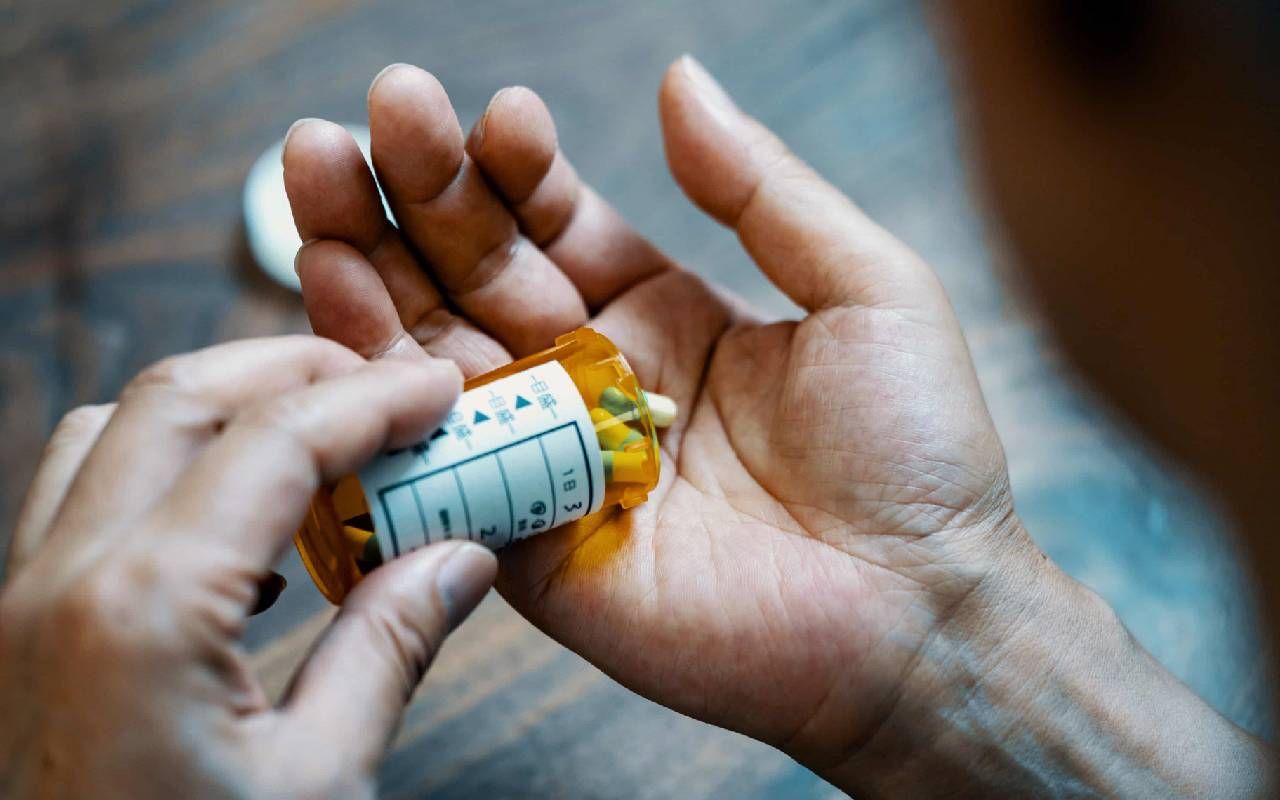Finding Solutions to the Drug Overdose Problem
From approved access to antidotes to expanded use of test strips, here are 8 steps that could help prevent overdoses in older adults
Accidental overdoses make the headlines when a celebrity such as "Friends" actor Matthew Perry dies, but the grim reality of this scourge plays out across the U.S. every day.
According to the Centers of Disease Control and Prevention (CDC), "adverse drug events" account for 1.3 million emergency room visits per year, with 350,000 requiring further hospitalization. More than 100,000 Americans die from overdoses every year — twice as many as road traffic fatalities, which numbered 42,795 in 2022.

Another shocking statistic gets less attention: from 2002 to 2021, drug overdoses quadrupled in adults 65 and older. In 2021, 83% of those deaths were ruled to be unintentional. And though illicit drugs are to blame for the majority of deaths in Americans, legally prescribed drugs are more likely to take their toll on older Americans.
"In recent years, there has been a dramatic rise in overdose deaths across all age groups, including among adults aged 50 and older, driven mainly by opioids."
"In recent years, there has been a dramatic rise in overdose deaths across all age groups, including among adults aged 50 and older, driven mainly by opioids," said Dr. Nora Volkow, director of the National Institute on Drug Abuse (NIDA), part of the National Institutes of Health (NIH). "From 2020 through 2021, adults aged 65 and over had the largest percentage increase in drug overdose death rates of any age group."
What are the solutions? Chelsea L. Shover, PhD, an epidemiologist and professor at University of California Los Angeles (UCLA) School of Medicine, says overall, the U.S needs better public health policies aimed at mental health and substance abuse disorders.
Shover points out the main reason for the most recent steep climb in overdoses: fentanyl, the legal anesthesia drug often used to bolster the high of illicit drugs. "Three quarters of unintended deaths involved illegal drugs," she said.
8 Steps to Address the U.S. Drug Overdose Issue
Awareness, education and treatment options are just some ways to tackle the problem, especially when it comes to older adults.
1. Expand Rehab Coverage Mandate To All Medicare Plans
Though the government requires Medicaid and private insurance companies to cover the costs of drug treatment programs, Medicare Advantage and some traditional Medicare plans have no similar mandate, and many provide zero coverage.
As actor Perry detailed in his book, "Friends, Lovers, and the Big Terrible Thing," he spent millions of dollars (reportedly between 7 and 9 million) on repeated stints in rehab centers before finally finding his way to sobriety.

Treatment programs are too expensive for most Americans to afford, without insurance coverage. "Substance abuse disorders are treatable," Shover said. Changing the mandate to include Medicare plans "would be a major way to reduce and prevent overdoses in older Americans," she added.
2. Require Proven Treatments in Rehab Programs
Shover said fewer than half of U.S. substance use facilities offer evidence-based treatments. Twelve-step peer support groups, such as Alcoholics Anonymous, work well for some people, and they do have strong evidence behind them. But for opioid use and stimulant use disorder, other treatments, including targeted medications, tend to be more effective.
For example, several studies show that for stimulant use disorder, behavioral therapy works best, along with incentive programs that pay a user when they pass a urine test. "That has good outcomes and is more cost effective than other treatments," Stover said. "For some people, peer support groups are helpful, but that shouldn't be the only option. A good treatment center offers multiple options."
3. Improve Access to Antidotes
In March 2023, the federal government approved the first non-prescription form of Naloxone, an opioid antagonist often known by the brand name Narcon. Naloxone stops an overdose from killing someone at the time when an overdose is happening.
"Clinicians don't necessarily think of older adults as people who use drugs," said Shover. "But prescribing naloxone to that person, and counseling them to have it on hand, is really important."
That strategy applies to people regardless of age, she said. "With the changed drug supply, with fentanyl, it's for patients who use drugs or those who love or live with people who use drugs. It's usually free, with no prescription needed. It's good for everyone to know how to use it. Initiatives that put it in more places, those are really good."
4. Expand Use of Test Strips
Fentanyl, which is common in the U.S. and Canada, but unusual in other nations, is behind the sharp rise in unintentional deaths because it is so strong, an estimated 50 to 100 times more potent than heroin or morphine. Even a tiny amount added into a pill, injectable or powdered drug can lead to death for an unsuspecting user, according to Shover.
"If you buy pills off the street, you're likely to get counterfeit pills, adulterated with fentanyl."
The FDA recently announced a crackdown on another legal compound often used illegally in street drugs: xylazine, an animal tranquilizer. "It's added to drugs because it is a sedative, and it extends the length of a high," said Shover. "The problem is, people are even more sedated than they would be with just an opioid."
Other xylazine side effects include deep wounds that can lead to abscesses, and even amputations of legs and arms. Additionally, Narcon doesn't work to reverse the effects of xylazine, complicating emergency treatment.
Shover recommends that anyone who uses illicit drugs keep a stash of test strips, which are sometimes offered free from public health departments. Harm reduction groups WiseBatch and NEXT Distro sell them online.
"Not enough people know about these strips," she said. "Someone planning to use cocaine should absolutely test before using."
Fetanyl is a synthetic drug that is easy to manufacture in a lab and easy to conceal. Though drug cartels are one source, Shover said the fentanyl trade is so lucrative that U.S.- based labs are a growing problem, too.
"If you buy pills off the street, you're likely to get counterfeit pills, adulterated with fentanyl," said Shover. "Painkillers such as oxycodone – the pills look like the real thing. It's hard to tell just looking at it that it's fake."
5. Avoid Buying from Non U.S. Pharmacies
Recent investigations by UCLA and the Los Angeles Times showed that many pharmacies in tourist areas of Mexico were selling mislabeled prescription drugs contaminated with dangerous drugs. One bottle labeled Adderal contained methampetamine.
"When you're buying drugs without a prescription in Mexico pharmacies, there's a good chance it's not the real thing," said Shover.
6. Seek Advice from Your Pharmacist
One of the most effective ways to reduce your risk: consult with your pharmacist, especially when starting a new prescription. Ask about common side effects, and also any known drug interactions with alcohol or over-the-counter medications. Several pharmacy chains have encouraged pharmacists to play a greater role in preventing opioid use disorder (OUD) which the National Institutes of Health (NIH) estimates affects an estimated three million Americans.
"Ketamine alone rarely causes an overdose. But at higher doses, you are basically putting yourself under anesthesia."
According to the National Institute on Drug Abuse, 80% of older adults take at least one prescription medicine, with 40 to 50% of those taking four to five medications daily. Volkow said that because older adults are more likely to use multiple medications, their risks are higher for having a harmful drug interaction. "For instance, if someone is prescribed both an opioid and benzodiazepine, that can increase the risk of overdose and death," she said. "Social factors such as feeling isolated, grief, and loneliness, could put older adults at a higher risk of substance use and addiction."
Shover said older drug users may not understand current-day risks. "People now over 65 are in that generation that had more drug use than previous generations, as opposed to just alcohol use," Shover said. "Every time they use, it's more dangerous than it was 20 years ago because fentanyl has become part of the illicit drug supply."
7. Stay Informed About Current Dangers
The Food and Drug Administration (FDA) takes reports from consumers and health care workers about Adverse Events (AE), a broad category that includes everything from a mild headache to fatal drug interactions. It's easy to file a report online or call 800-332-1088. To see these reports, go to the FDA website or MedlinePlus.gov, a service of NIH with reliable health information for consumers.
It's also a good idea to search for warnings about any non-prescription supplements you take. Recently, the FDA analyzed herbs sold on Amazon as tejacote root, a popular folk medicine. In reality, the bottles contained yellow oleander, a toxic plant that can cause fatal heart and neurological problems.
8. Never Use Drugs Alone
Matthew Perry's autopsy pointed to an abnormally high dose of ketamine, a legal substance used in medical settings that is also sold on the illegal market. "Ketamine alone rarely causes an overdose," Shover said. "But at higher doses, you are basically putting yourself under anesthesia."
Had Perry been using ketamine with another person who could have come to his aid, he may have survived, she said. "That's the sad reality of it. Using alone is much riskier. We need better education for older adults. There's a very high risk for an overdose if no one else is there."


